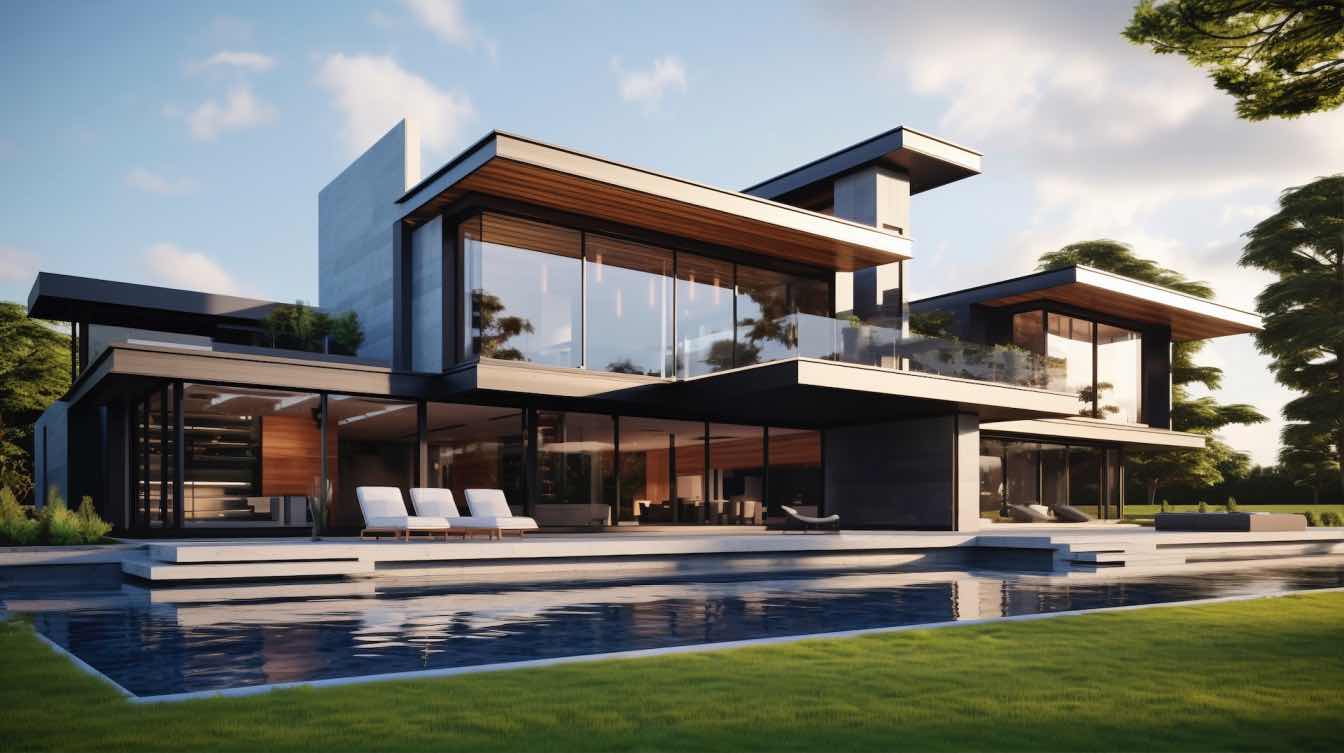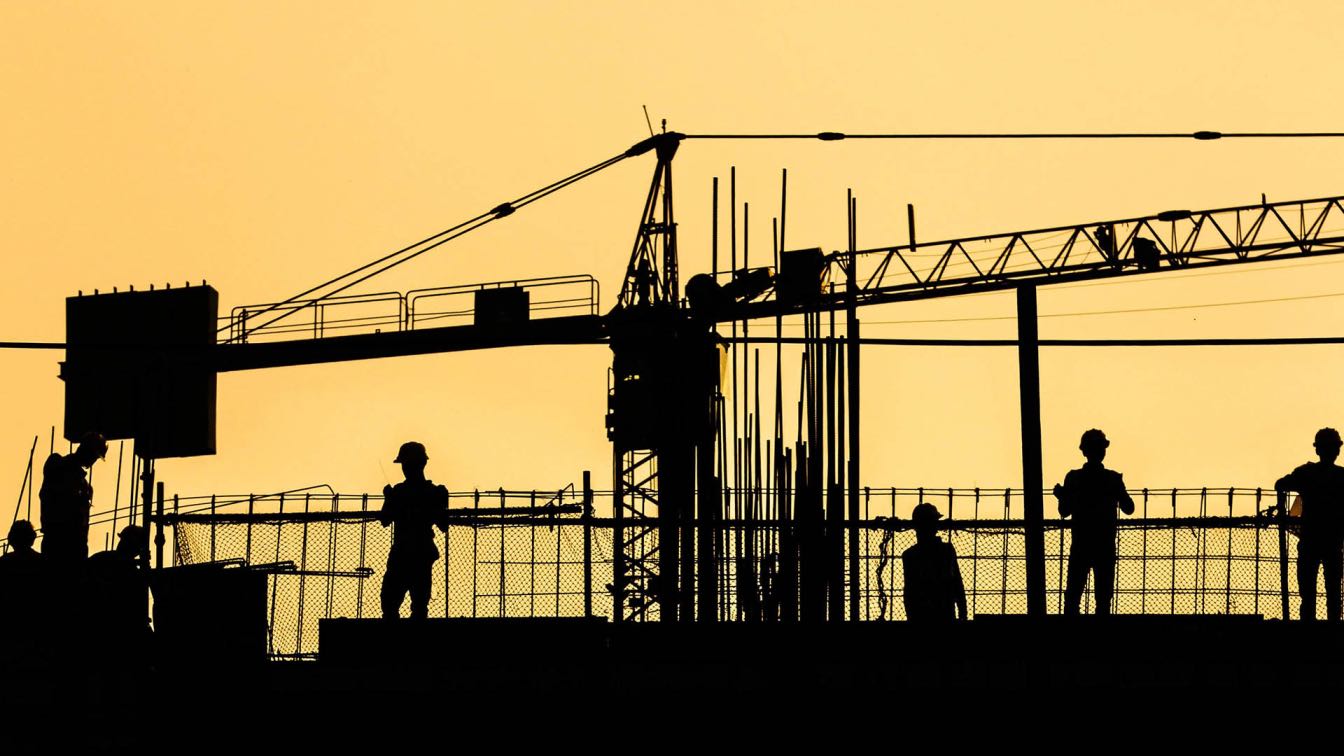Flat roofs are experiencing a rise in popularity across the United States, particularly in areas where modern architecture and efficient living spaces are valued. While some homeowners may still prefer the traditional sloped roof, flat roofs offer several distinct advantages that make them an attractive option. From their sleek, contemporary look to their practicality in maximizing space, these roofs are now seen as a versatile solution for a wide range of home designs. In this article, we’ll explore the four main reasons why flat roofs are emerging as a leading choice for U.S. homes: their modern aesthetic, the potential for rooftop spaces, their compatibility with solar panels, and their overall simplicity and cost-effectiveness.
Modern Aesthetic – The Appeal of Sleek and Simple Design
The clean, unadorned lines of flat roofs perfectly complement the modern house design aesthetic that’s sweeping across American neighborhoods. While sloped roofs have been the hallmark of suburban homes for decades, flat roofs align with contemporary architectural trends that emphasize minimalism, simplicity, and the use of geometric shapes. These roofs offer a streamlined look that works well with both industrial and residential buildings, making them a flexible choice for a variety of settings.
Flat roofs contribute to the uncluttered appearance that many modern homeowners desire. In contrast to traditional peaked roofs that often feel heavy and dominant, flat roofs provide a sense of openness and lightness to a home’s overall design. This gives the exterior a more balanced and harmonious feel, especially when paired with large windows or glass walls that bring in natural light. Moreover, the lack of slopes helps draw attention to other architectural details like textured wall cladding, outdoor sculptures, or a well-designed garden.
Homes with flat roofs are particularly common in urban environments, where maximizing vertical space is critical. Whether it’s a townhouse in Chicago or a beachfront home in Miami, flat roofs allow for the seamless integration of contemporary design elements without overwhelming the landscape. They are a natural choice for those who want to achieve a modern, forward-looking aesthetic that feels fresh and innovative. Additionally, the simplicity of flat roofs can accentuate materials such as concrete, steel, or wood in ways that feel natural and understated.
Maximizing Space with Rooftop Living Areas
Flat roofs offer homeowners the chance to expand their living space in creative ways. In cities where outdoor areas are often limited, flat roofs can be transformed into functional spaces that enhance the value and usability of the home. Whether used for a garden, a lounging area, or even a small pool, flat roofs offer unmatched potential for customization.
For those living in densely populated areas, such as New York City or San Francisco, outdoor space is a rare and valuable commodity. With a flat roof, homeowners can create an inviting oasis high above the street. Many homeowners opt to install rooftop gardens that provide a green escape without taking up precious yard space. The addition of raised planters, comfortable seating, and perhaps even a pergola for shade, can turn a flat roof into a private retreat perfect for unwinding or entertaining guests. Additionally, the environmental benefits of having a rooftop garden are significant. Not only can plants improve air quality, but the added greenery can help reduce the urban heat effect by cooling the building below.
For those with more ambitious ideas, flat roofs can accommodate even larger-scale outdoor setups. Think of cozy rooftop patios with fire pits, outdoor kitchens, or even plunge pools that allow for an elevated view of the surrounding area. In warmer climates like Florida or Texas, homeowners are capitalizing on their flat roof space to create outdoor lounges that can be used year-round. It’s a brilliant way to make use of every square foot of a property without expanding the footprint of the home.
Solar Panel Compatibility – Eco-Friendly and Energy-Efficient
The rise of renewable energy sources has encouraged many homeowners to consider solar power as a viable solution for reducing their carbon footprint. Flat roofs are especially conducive to solar panel installations, as they allow for optimal positioning and orientation to capture the maximum amount of sunlight. This flexibility in placement is a major advantage over sloped roofs, where the angle of the roof can limit the effectiveness of solar panels.
In states like California and Arizona, where sunshine is abundant, solar power is becoming a standard feature in new homes. Flat roofs make it easier for installers to lay out the panels in a configuration that ensures consistent exposure to sunlight throughout the day. This not only maximizes energy production but also reduces the number of panels required to meet the energy needs of the home. The added benefit is that solar panels on flat roofs are less visible from the street, maintaining the clean, uninterrupted lines of the home’s exterior.
Additionally, flat roofs provide more flexibility when it comes to future upgrades. As solar technology evolves, homeowners may want to expand their solar arrays or replace older panels with more efficient models. The accessibility of flat roofs makes it easier and more cost-effective to modify or upgrade the system without having to contend with the complexities of a sloped surface. It’s an investment that offers both immediate energy savings and long-term environmental benefits, making flat roofs an ideal choice for eco-conscious homeowners.
Simplicity and Cost-Effectiveness – A Practical Choice for Homeowners
Flat roofs are not only visually appealing but also practical from a cost perspective. One of the main reasons homeowners opt for flat roofs is the simplicity of their design, which translates into reduced construction costs. Unlike sloped roofs, which require intricate framing and additional materials to create the peaks and valleys, flat roofs can be built with fewer materials and less labor. This makes them an affordable option for those looking to build or renovate a home without compromising on style.
In addition to lower construction costs, flat roofs are easier and cheaper to maintain over time. Routine tasks like cleaning gutters, inspecting for damage, or repairing leaks are far less complicated on a flat roof. With easy access to the entire roof surface, homeowners can carry out these maintenance tasks without the need for specialized equipment or expertise. This accessibility also means that any necessary repairs can be completed quickly and efficiently, further reducing long-term maintenance costs.
Flat roofs are especially cost-effective in regions with milder weather conditions, where heavy snowfall or rain isn’t a major concern. In areas like the Southwest or Southern California, where precipitation is relatively low, flat roofs are a low-maintenance solution that can last for decades with minimal upkeep. However, even in areas with more extreme weather, advances in roofing materials—such as waterproof membranes and improved drainage systems—mean that flat roofs can be engineered to withstand a wide range of conditions.
Conclusion
Flat roofs offer a unique combination of modern style, functional living space, energy efficiency, and cost savings. Their clean, simple lines appeal to those who appreciate contemporary architecture, while their potential for rooftop spaces adds valuable square footage to homes in urban environments. Additionally, their compatibility with solar panels makes them an eco-friendly choice for those looking to reduce their energy costs. Finally, the simplicity of their design makes them a practical, affordable option for homeowners looking to balance style with function. As these advantages continue to gain recognition, it’s easy to see why flat roofs are quickly becoming a top choice for U.S. homes.





